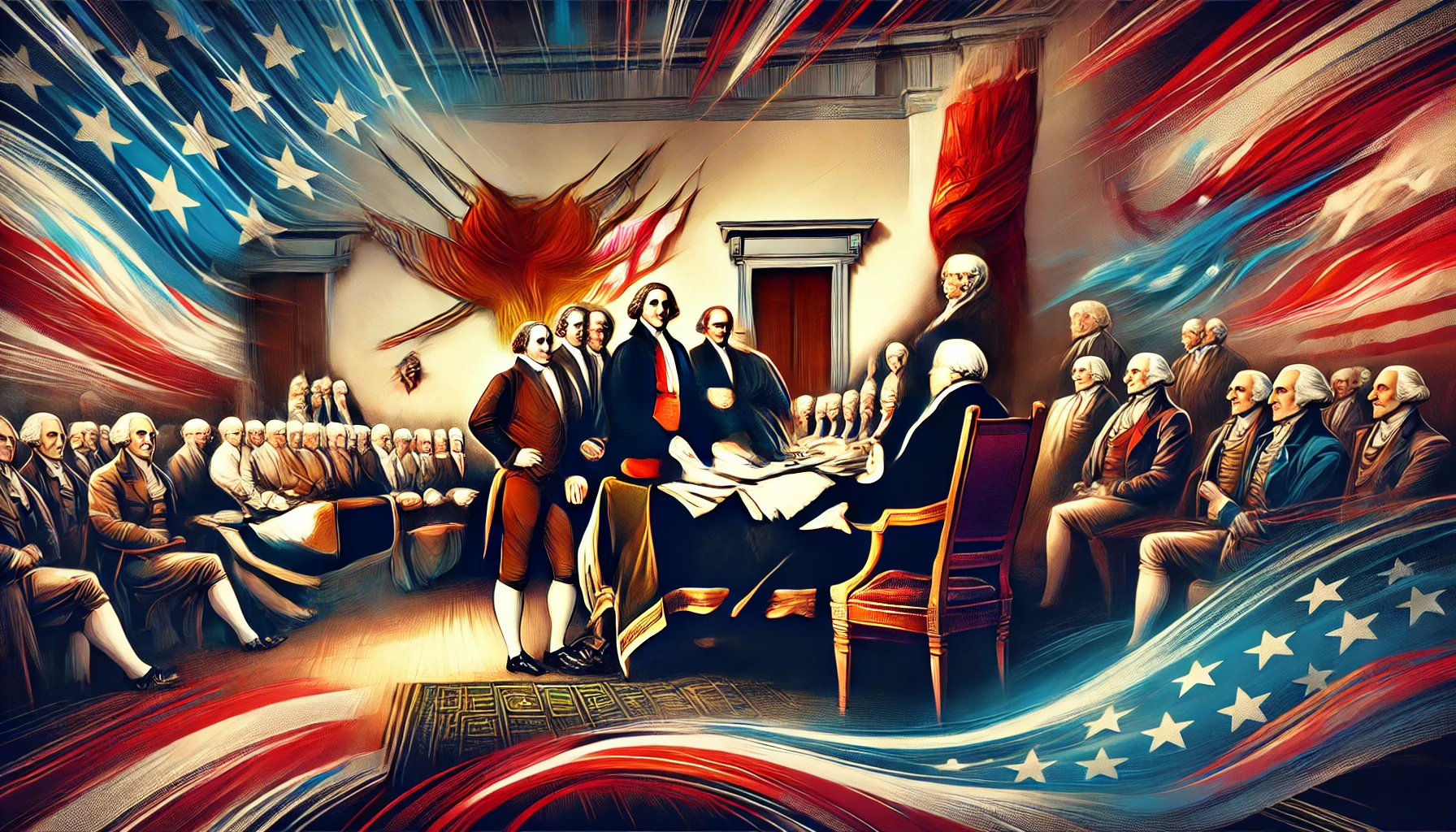Read the article aloud on your own or repeat each paragraph after your tutor.
LEVEL 6 – INTERMEDIATE
On July 4, 1776, the American colonies made a bold and historic decision that would change the course of history. They declared their independence from Great Britain, a powerful empire that had ruled over them for more than a century. The document that announced this decision, the Declaration of Independence, is not just a piece of paper—it is a powerful statement of freedom and the rights of people to govern themselves.
The Declaration of Independence was written primarily by Thomas Jefferson, with input from other leaders like John Adams and Benjamin Franklin. It was a risky move, as the colonies were challenging the most powerful nation in the world at the time. But the American leaders felt they had no choice. They believed that the British government was treating them unfairly, and they wanted to explain to the world why they were breaking away.
The Structure of the Declaration
The Declaration of Independence is divided into three main parts. The first part is the preamble, which explains why the colonies have decided to declare independence. Jefferson wrote that all people have certain “unalienable rights,” including “life, liberty, and the pursuit of happiness.” These rights, he argued, come from nature or God, not from any government, and no one should take them away.
The second part of the Declaration lists the specific grievances, or complaints, that the colonies had against King George III of Britain. These grievances were serious enough that the American leaders believed they justified breaking away from British rule. Some of the grievances included the King’s refusal to pass necessary laws, his interference with local governments, and his imposition of taxes without the colonies’ consent.
The third part of the Declaration is the formal statement of independence. In this section, the colonies officially declare that they are free and independent states, no longer subject to British rule. This was a revolutionary act, as it marked the birth of a new nation.
A Closer Look at the Grievances
To understand why the American colonies decided to take such a drastic step, it’s important to look at the grievances they listed in the Declaration. These grievances were not just complaints; they were real issues that affected the lives of the colonists.
One grievance, for example, was that the King had refused to pass laws that were “wholesome and necessary for the public good.” This meant that the colonies were unable to govern themselves effectively because the British government wouldn’t allow them to make their own laws. Another grievance was that the King had dissolved colonial legislatures that opposed his policies, leaving the colonies without a voice in their own governance.
These grievances reflect the growing frustration in the colonies with British rule. The colonists felt that they were being treated unfairly and that their rights were being violated. The Declaration of Independence was their way of standing up and saying, “Enough is enough.”
Vocabulary
- Preamble – The introduction to a document that explains its purpose.
- Example: The preamble of the Declaration of Independence outlines the reasons for the colonies’ decision to break away from Britain.
- Grievance – A complaint or a wrong that is seen as grounds for protest.
- Example: The colonists listed many grievances against King George III in the Declaration of Independence.
- Unalienable – Something that cannot be taken away or denied.
- Example: The Declaration states that everyone has unalienable rights such as life, liberty, and the pursuit of happiness.
- Dissolved – Formally closed or ended.
- Example: The King dissolved the colonial legislatures when they opposed his policies.
- Imposition – The act of establishing something by authority, such as taxes.
- Example: The colonists were angry about the imposition of taxes without their consent.
- Revolutionary – Involving or causing a complete or dramatic change.
- Example: Declaring independence from Britain was a revolutionary act by the American colonies.
- Example: Declaring independence from Britain was a revolutionary act by the American colonies.

Discussion Questions
- Why did the American colonies feel the need to declare independence from Great Britain?
- What are some examples of the grievances listed in the Declaration of Independence?
- How does the Declaration of Independence explain the concept of unalienable rights?
- Why was the Declaration of Independence considered a revolutionary document?
- In what ways do you think the grievances listed in the Declaration are still relevant today?
Further Discussion
- How might the world have been different if the American colonies had not declared independence?
- What does it mean to have unalienable rights, and why are they important?
- How do you think the grievances of the American colonists compare to modern protests or movements?
- Why is it important for governments to allow people to have a voice in their governance?
- Do you think the American Revolution was inevitable, or could there have been another way to resolve the conflict?


